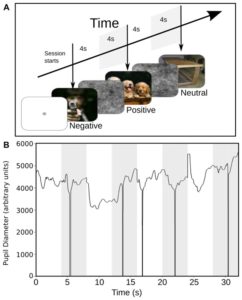Improve Borderline Personality Disorder and Reduce Suicidal Thoughts with Mindfulness
By John M. de Castro, Ph.D.
“mindfulness meditation encourages recognition of the wide palate of human emotions, but also keenly encourages one not to fixate on these temporary feelings. Work in mindfulness meditation includes labeling these emotions in a non-judgmental manner and allowing them to pass just as freely as they came. The misery and the suffering those with BPD experience in life often come from our denial of some of these emotions.” – Blaise Aguirre
Borderline Personality Disorder (BPD) is a very serious mental illness that is estimated to affect 1.6% of the U.S. population. It involves unstable moods, behavior, and relationships, problems with regulating emotions and thoughts, impulsive and reckless behavior, and unstable relationships. BPD is associated with high rates of co-occurring depression, anxiety disorders, substance abuse, eating disorders, self-harm, suicidal behaviors, and completed suicides. BPD is dangerous as it can propel the sufferer, on the spur of the moment, to overreact to anger, take drugs, harm themselves, and even terminate their lives.
BPD has not responded well to a variety of therapies with the exception of Dialectical Behavior Therapy (DBT). It is significant that a difference between DBT and other therapies is that it emphasizes mindfulness. This suggests that mindfulness training may be essential in treating Borderline Personality Disorder (BPD). Mindfulness training has been found to be helpful intreating substance abuse and decreasing suicidal thoughts. Hence, there appears to be a relationship between mindfulness and Borderline Personality Disorder (BPD), substance abuse and suicidal thoughts.
In today’s Research News article “The relationship between dispositional mindfulness, borderline personality features, and suicidal ideation in a sample of women in residential substance use treatment.” See summary below or view the full text of the study at: https://www.ncbi.nlm.nih.gov/pmc/articles/PMC4834542/, Shorey and colleagues recruited adult women with Borderline Personality Disorder (BPD) who were also undergoing treatment for substance abuse. The women completed measures of mindfulness, BPD features, including affective, identity problems, negative relationships, and self-harm, suicidal thoughts, alcohol abuse, drug use, and impression management. They then conducted regression analyses to investigate the relationship between mindfulness and BPD, suicidality, and drug use.
They found that in these patients the higher the levels of mindfulness the lower the levels of BPD features, including affective, identity problems, negative relationships, and self-harm, the lower the levels of suicidal thoughts, and the higher the levels of impression management. Hence, mindfulness was significantly negatively associated with BPD symptoms and suicidality. These relationships, with the exception of self-harm, remained significant even after statistically accounting for alcohol use, drug use, age, and impression management.
These results suggest that mindfulness may be an antidote to Borderline Personality Disorder (BPD) symptoms and suicidal thoughts. It is possible that this results from the ability of mindfulness to improve emotion regulation. Mindful people to experience their emotions deeply but are able to respond to them rationally and adaptively. Characteristically, patients with BPD avoid experiencing negative emotions. So, mindfulness, by promoting the experience of these emotions may counteract one of the core features of BPD.
It should be recognized that these results are correlational. So, causality cannot be determined. But, since Dialectical Behavior Therapy (DBT) which contains mindfulness training is the only known therapy that has been shown to be effective for BPD. It would seem reasonable to suggest that mindfulness causes changes in BPD symptoms. A randomized clinical trial of mindfulness training for BPD symptoms and suicidality should be conducted in the future to test these ideas. The potential for mindfulness training to improve the symptoms of this devastating and dangerous mental illness mandates that such a trial be conducted.
So, improve borderline personality disorder and reduce suicidal thoughts with mindfulness.
“Mindfulness meditation training can help people with BPD to feel less “stuck” in their emotions, and less judgmental of the emotions and themselves. Mindfulness meditation training may also help individuals with BPD be more effective in applying healthy coping skills in the midst of emotional pain, because mindfulness skills allow you to get just a little bit of space to be able to notice the emotion and be more strategic in terms of how you will act in the face of the emotion.” – Line Goguen-Hughes
CMCS – Center for Mindfulness and Contemplative Studies
This and other Contemplative Studies posts are also available on Google+ https://plus.google.com/106784388191201299496/posts and on Twitter @MindfulResearch
Study Summary
Shorey, R. C., Elmquist, J., Wolford-Clevenger, C., Gawrysiak, M. J., Anderson, S., & Stuart, G. L. (2016). The relationship between dispositional mindfulness, borderline personality features, and suicidal ideation in a sample of women in residential substance use treatment. Psychiatry Research, 238, 122–128. http://doi.org/10.1016/j.psychres.2016.02.040
Highlights
- Theory suggests mindfulness is inversely related to BPD/suicidal ideation
- We investigated this in a sample of women in treatment for substance use
- Dispositional mindfulness was negatively associated with BPD
- Dispositional mindfulness was negatively associated with suicidal ideation
Abstract
Borderline personality disorder (BPD), which is characterized by unstable moods, behavior, and relationships, is also associated with heightened suicidal ideation. Prior research has demonstrated that BPD and suicidal ideation are prevalent among women in substance use treatment. Efforts to treat substance use in this population are made difficult due to the severity of BPD, and it is possible that mindfulness-based interventions specific to substance use could be an effective approach for this population. However, basic research is needed on the relationship between dispositional mindfulness, BPD, and suicidal ideation among women in treatment for substance use to support their associations, which was the purpose of the present study. Pre-existing medical records were reviewed from a residential substance use treatment center. A total of 81 female patients were included in the current study. Patients completed self-report measures of mindfulness, BPD, suicidal ideation, substance use, and impression management at treatment intake. Findings demonstrated dispositional mindfulness to be negatively associated with BPD features and suicidal ideation. With the exception of self-harm, this negative relationship was found even after controlling for age, substance use, and impression management. Future research should examine whether mindfulness-based interventions are an effective treatment for comorbid substance use and BPD.









